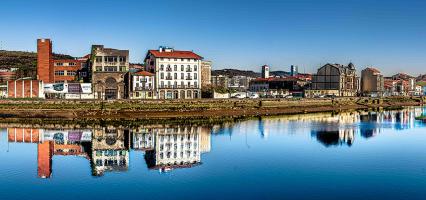Thessaloniki gets ready for its metro launch in November
The underground rapid transit lines have been under construction for almost two decades due to various project delays
 TheMayor.EU logo
TheMayor.EU logo A massive study into the air quality of the Belgian capital revealed large disparities between districts
Last week, authorities in Brussels published a study on the air quality in the city, revealing a clear disparity between socio-economic background and pollution. According to the data, less affluent areas were impacted more severely by traffic-related emissions, despite residents in those areas owning fewer personal vehicles.
The study was carried out largely by citizen volunteers, working in tandem with Brussels Environment. CurieuzenAir, as it is called, covered around 3,000 data collection points in the city, making it the largest citizen survey in the Belgian capital to date.
Around 3,000 citizens in Brussels took part in the air quality survey, by putting up measuring equipment on their property between 25 September and 23 October 2021. The survey focused primarily on nitrogen dioxide emissions (NO2) – a gas that can be damaging to the human body and is generated mainly from burning fuel.
According to the overall data from CurieuzenAir, the air quality in Brussels is quite diverse, ranging from extremely good to extremely poor. At the same time, though, researchers have also said that the situation is improving. However, the favourable readings could be a result of less traffic due to the pandemic measures in place at the time.
The data suggests that only 1.4% of people in Brussels, or 17,000, are exposed to air pollution exceeding the EU’s health standards of 40 micrograms per cubic metre. Yet 98% of citizens, or 1.2 million people, live or work in areas with pollution exceeding the World Health Organisation’s new threshold of 10 micrograms per cubic metre.
Nevertheless, Professor Filip Meysman, a coordinator at CurieuzenAir, explained that this is still good news. He continued by pointing out that Brussels citizens exposed to air quality below the EU’s health standard were estimated at 10% two years ago and at 50% ten years ago.
He attributed this radical shift to the pandemic and lockdowns, but also to home office arrangements and to the rise of cycling as a popular mode of transportation in the city.
Apart from there being a link between the less affluent regions in the city and a higher chance of pollution, researchers have also found that sometimes there are disparities on the same streets. This is due to what is called the canyon effect – where high-rise buildings on both sides of the road would create a sort of canyon trapping pollutants.
Somewhat unsurprisingly, neighbourhoods on the edges of the city are far less polluted than their counterparts in the heart of the Belgian capital. At the same time, according to Dirk Jacobs, professor of Sociology at the Université Libre de Bruxelles, highly populated areas tend to have significantly more pollution. Additionally, there is a clear link between income and air quality.
Professor Jacobs was quoted in a press release explaining: “Ironically, this also means that in neighbourhoods where the number of cars per household is lower, the air quality is still worse due to the impact of nearby traffic.”

The underground rapid transit lines have been under construction for almost two decades due to various project delays

Now you can get your wine in Talence by paying directly in Bitcoin

That’s because the state has to spend money on updating the railway infrastructure rather than subsidizing the cost of the popular pass

Rethinking renewable energy sources for the urban landscape

The examples, compiled by Beyond Fossil Fuels, can inform and inspire communities and entrepreneurs that still feel trepidation at the prospect of energy transition

Now you can get your wine in Talence by paying directly in Bitcoin

The 10th European Conference on Sustainable Cities and Towns (ESCT) sets the stage for stronger cooperation between the EU, national and local level to fast track Europe's transition to climate neutrality.

At least, that’s the promise made by the mayor of Paris, Anne Hidalgo

The underground rapid transit lines have been under construction for almost two decades due to various project delays

At least, that’s the promise made by the mayor of Paris, Anne Hidalgo

Hostal de Pinós is located in the geographical centre of the autonomous region

Despite its church-y name, the district has long been known as the hangout spot for the artsy crowds

Urban dwellers across the EU are having a say in making their surroundings friendlier to people and the environment.

Forests in the EU can help green the European construction industry and bolster a continent-wide push for architectural improvements.

Apply by 10 November and do your part for the transformation of European public spaces

An interview with the Mayor of a Polish city that seeks to reinvent itself

An interview with the newly elected ICLEI President and Mayor of Malmö

A conversation with the Mayor of Lisbon about the spirit and dimensions of innovation present in the Portuguese capital














